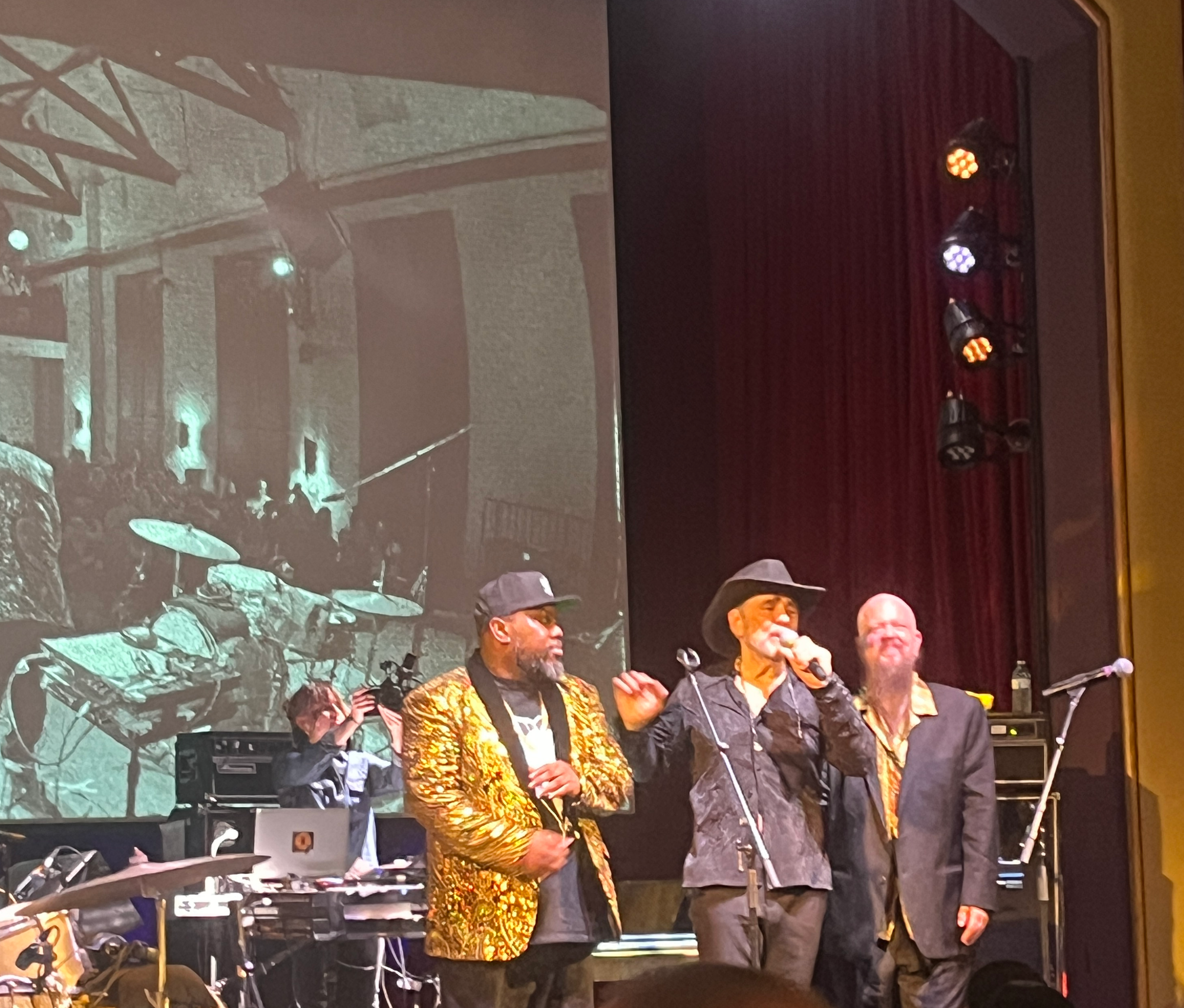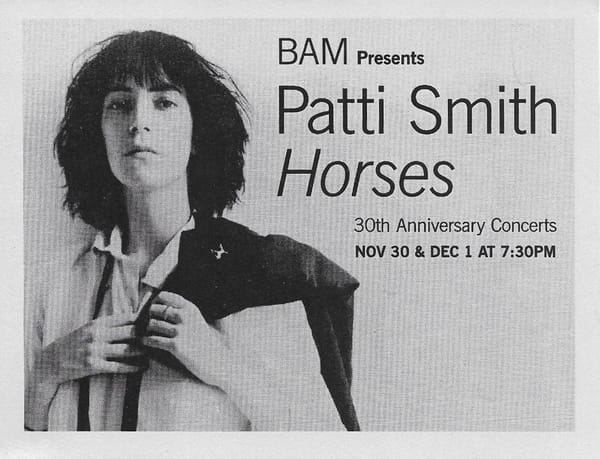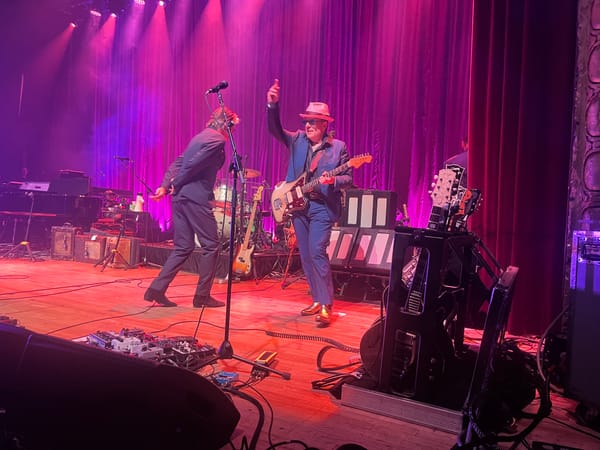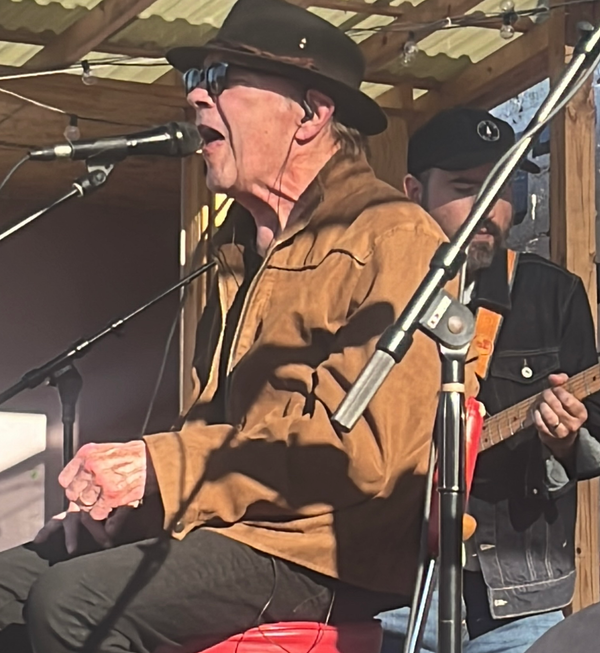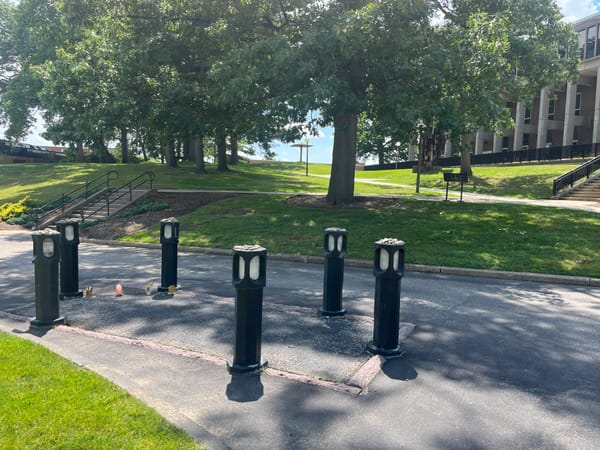Daniel Lanois Trio, Aeolian Hall, London, Ontario, July 11, 2025
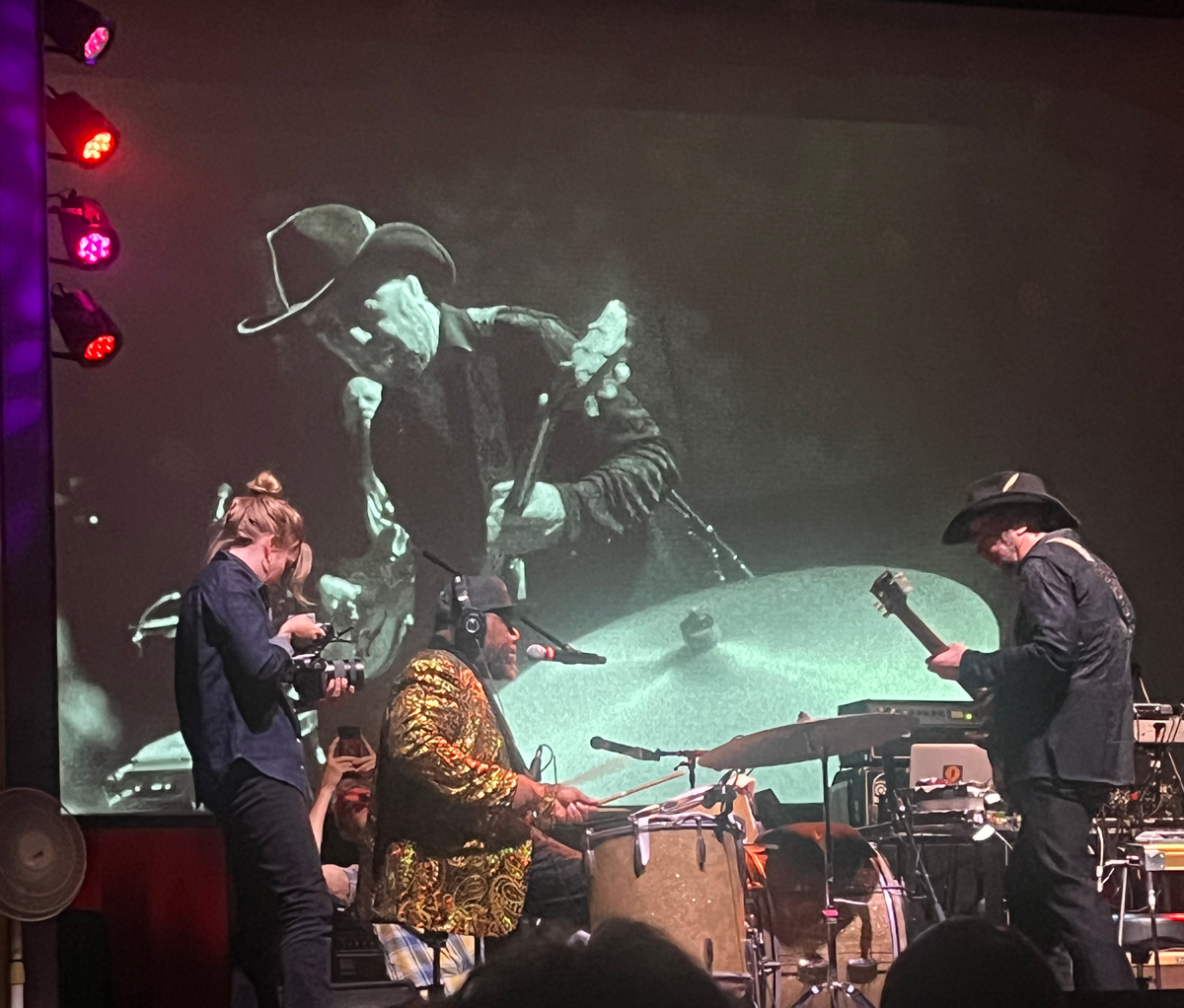
The Daniel Lanois Trio played two nights at the Aeolian Hall in London, Ontario, an ancient and gorgeous venue a two-hour drive from Detroit that is apparently one of the top 10 halls in Canada, according to the CBC. It was an intimate space with great resonance and that is exactly where you want to go see someone like Daniel Lanois. The band – Jim Wilson on bass and Jermaine Holmes on percussion – were arranged facing inward, with Lanois at the center. The room was so live, you could feel the vibration of Holmes’ foot hitting the kick drum, the shudder of the bass coming out of the amp. And the sound created by this ensemble was enormous. In someone else’s hands, this could have overburdened the hall. But someone else would not be Daniel Lanois.
I would owe Daniel Lanois the world if all he had ever done was work on Achtung Baby, because that is a record that changed my life. But the rest of his resume is impressive not just because of who he worked with, but how the sound qualities and shadings and techniques didn’t just impact U2 or Dylan or Peter Gabriel or Emmylou Harris or Robbie Robertson or anyone else he worked with, but it extended its reach to everyone who wanted their records to sound exactly like those or at least wanted to borrow from his bag of tricks. That’s not an insult, it’s exactly how rock and roll is supposed to work. His work, with Eno and alone and in other collaborations, permanently shifted the sonic landscape.
When Daniel Lanois picks up a goldtop Les Paul and launches a barrage of chords and notes that almost visibly shimmer in the light, you might, if you didn’t know better, think that he was copying the Edge, except of course that it is the other way around. The people behind me reading Lanois’ Wikipedia page out loud to each other before the show might think it sounds familiar or might imagine the transmission went in a different direction. Getting to hear him play electric guitar live and unleashing his particular qualities of warmth and sustain and resonance was stunning.

And that was only matched by getting to hear him play pedal steel. It was the second instrument he learned how to play (the first was a penny whistle) and it was definitely a moment where I particularly appreciated how he integrates visuals into the show, with a camera that moves to show you the perspective of the musicians and their hands on the instruments and other images and effects that don’t overburden the song or the viewer. (Disclaimer: I am friends with the person responsible for this aspect of the show.)
And I am not insulting the Wikipedia-reading audience members, because they were more interested and attentive during the evening’s entertainment than the three drunk boors next to me who spent the night talking to each other and noting out loud what was different between Monday night and Sunday night, when they weren’t checking their text messages. The rest of the audience was engaged and attentive and they cheered for a full five minutes at the show’s conclusion, even after the house lights were on and there was music coming through the PA, completely refusing to leave.
I was particularly delighted to get to hear songs from Lanois’ first solo album, Acadie, specifically “Still Water” and “The Maker.” That record came out when I was working for a Warner Bros. affiliate abroad and there was a problem in the manufacturing process so I had to keep listening to new pressings, and listening to them closely to make sure that the old problem got resolved and there hadn’t been a new one created (which kept happening). This was not an onerous chore. The record was atmospheric and expansive, with a cast of contributing musicians that did not surprise anyone, except the Neville Brothers -- which was less a surprise per se than a delight. In 1989 we were still moving away from gated drums and compression everywhere. Acadie was an absolute balm to your ears in that landscape. (Lanois has just reissued the record on vinyl, along with Shine and Belladonna.)
The other numbers that were particularly memorable were an early version of “Amazing Grace,” "Shenandoah," “Silverado,” and “Ring the Alarm,” the latter particularly relevant and applicable and momentarily grim. Lanois was in black while Jermaine Holmes was resplendent in a gold paisley sequin jacket and Jim Wilson opted for a slinky gold shirt. Obviously they're phenomenal musiciansm, but also incredible vocalists, and we got at least three numbers in three-part harmony and those expanded the warmth of the set even further than the non-acapella songs did. You’d think it would be the opposite. The room helped, the audience helped, the giant moon hanging in the sky outside did its part too.
